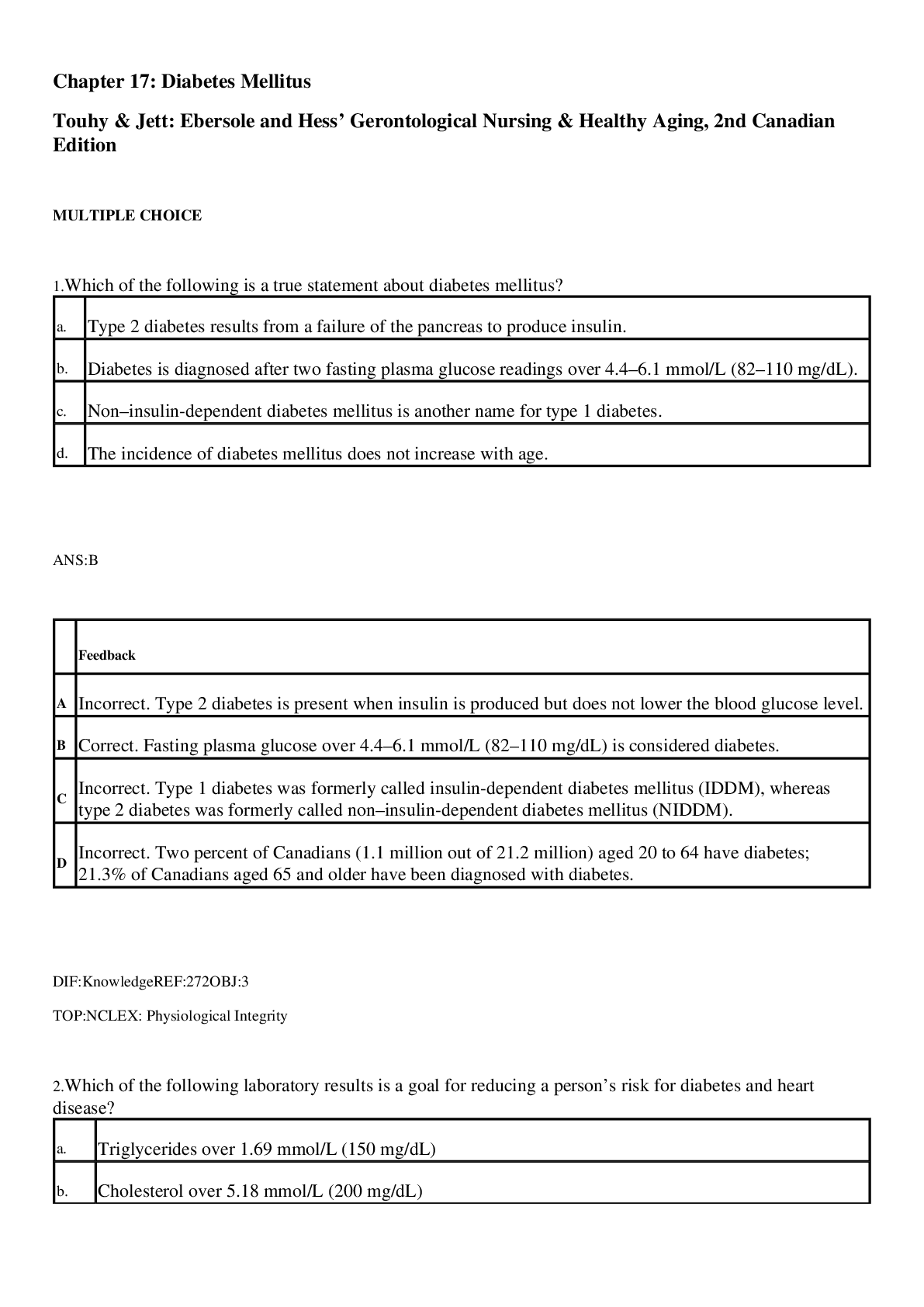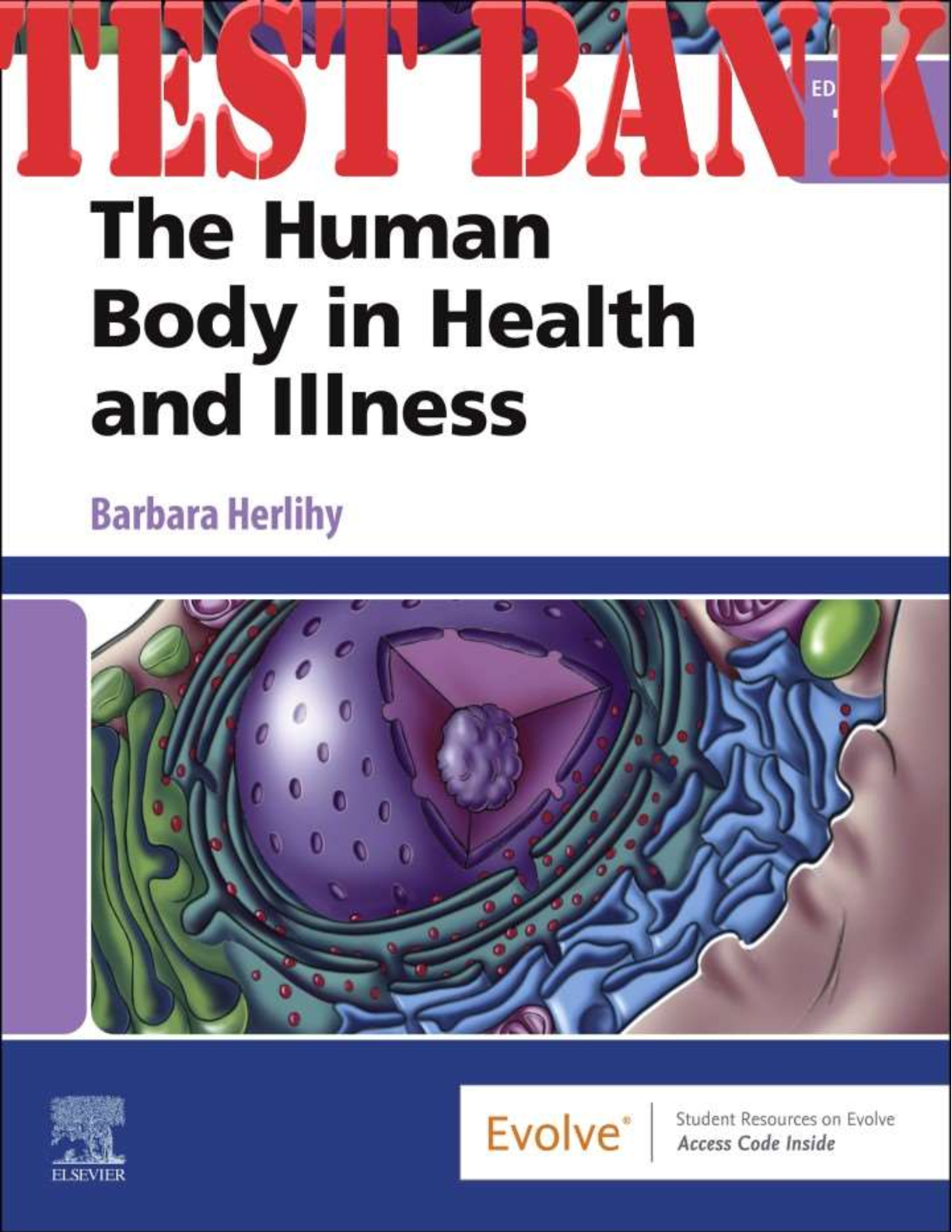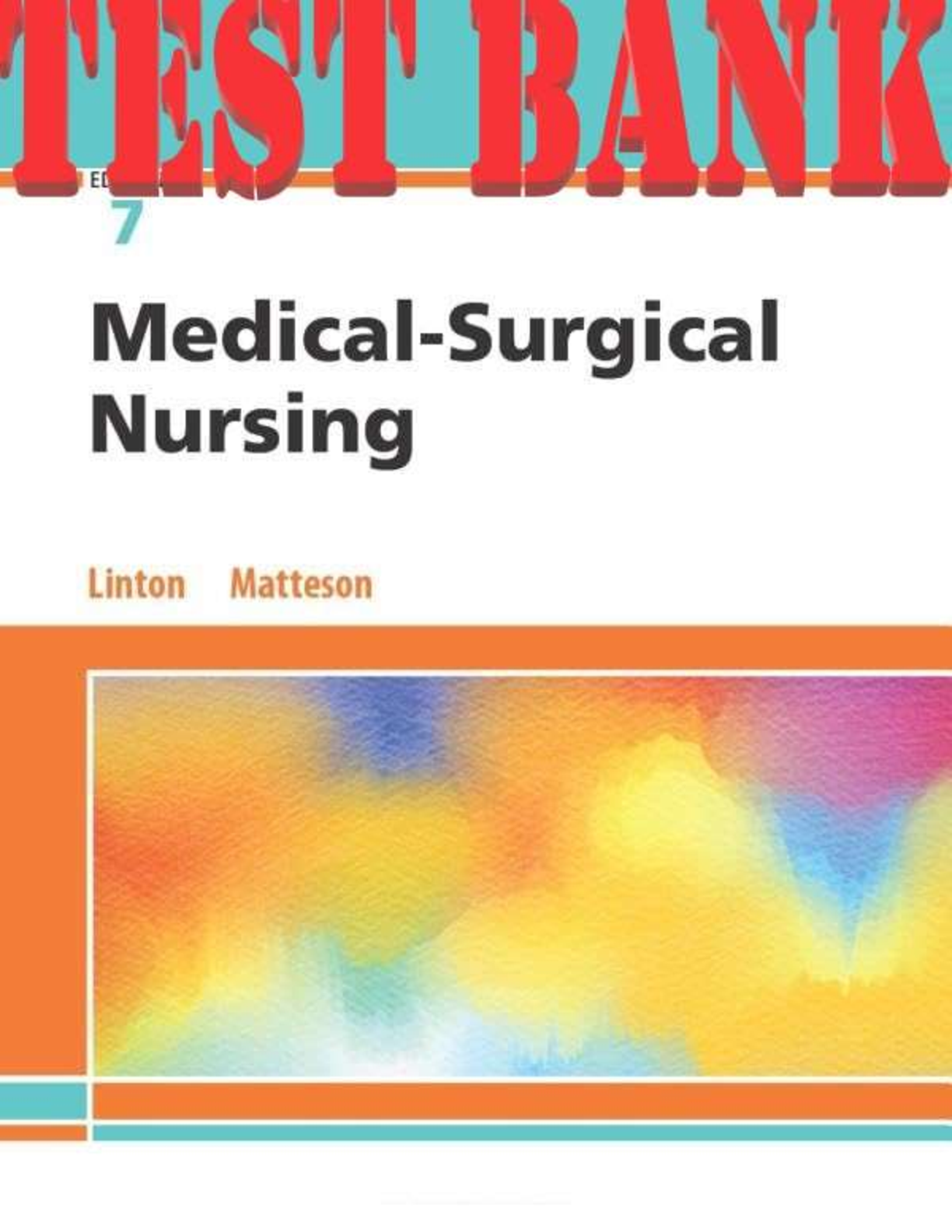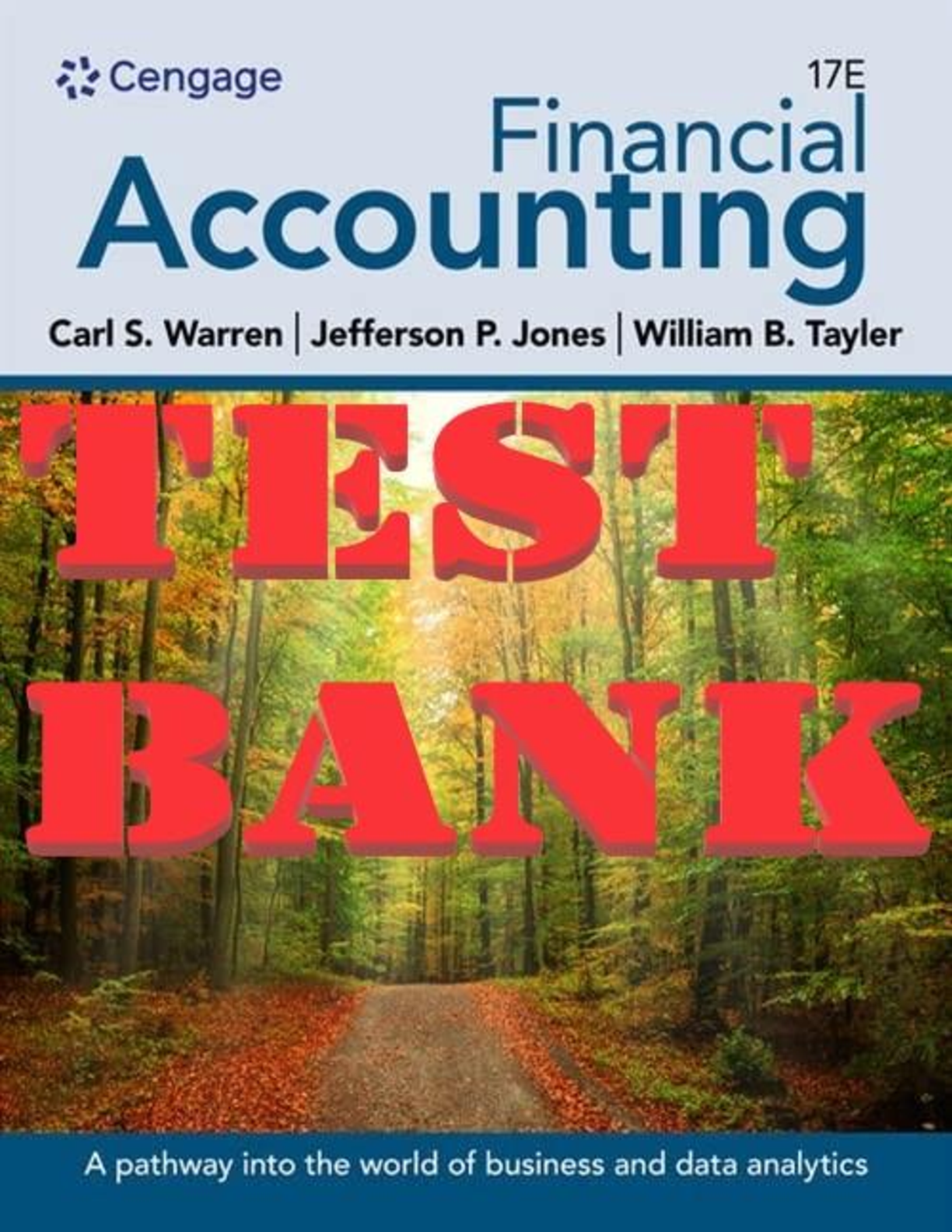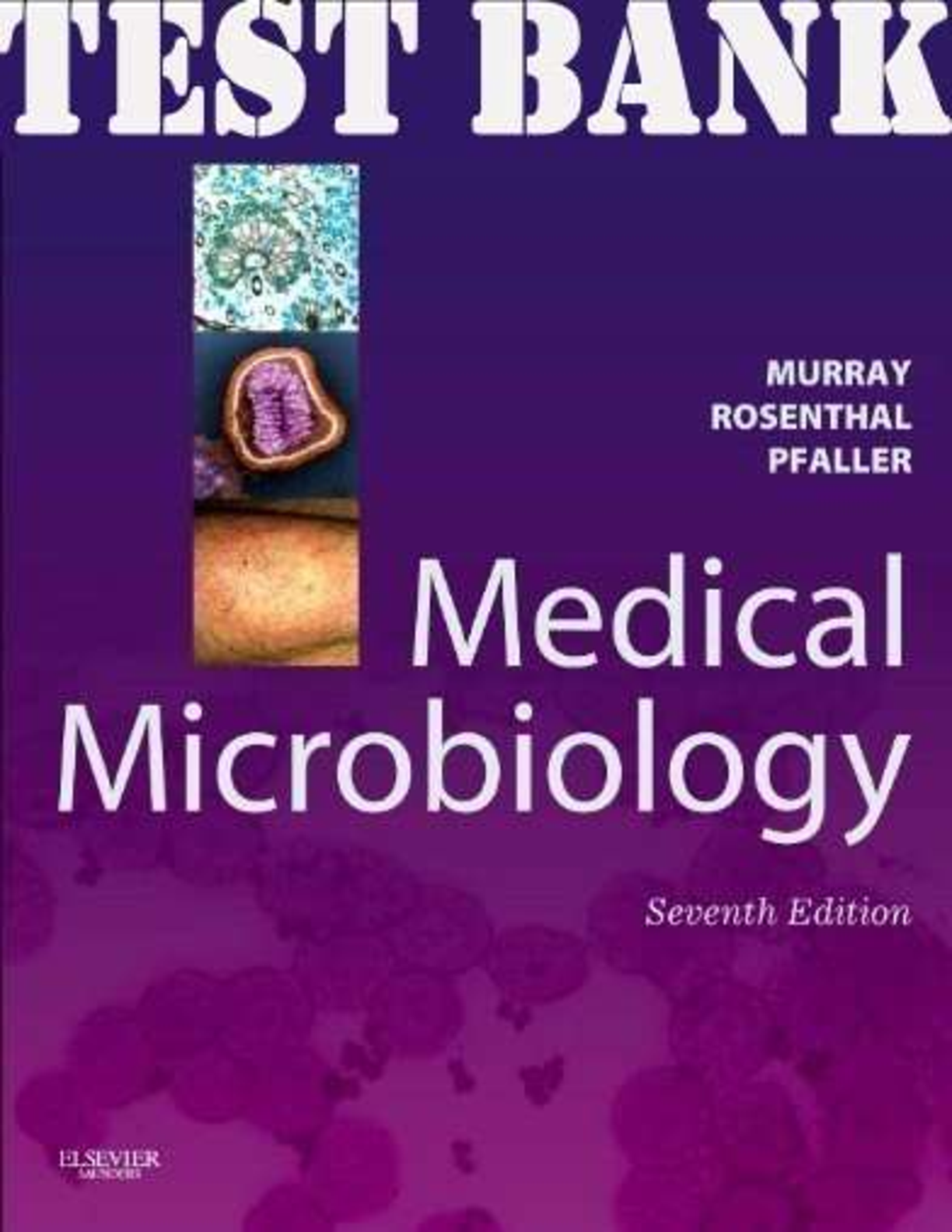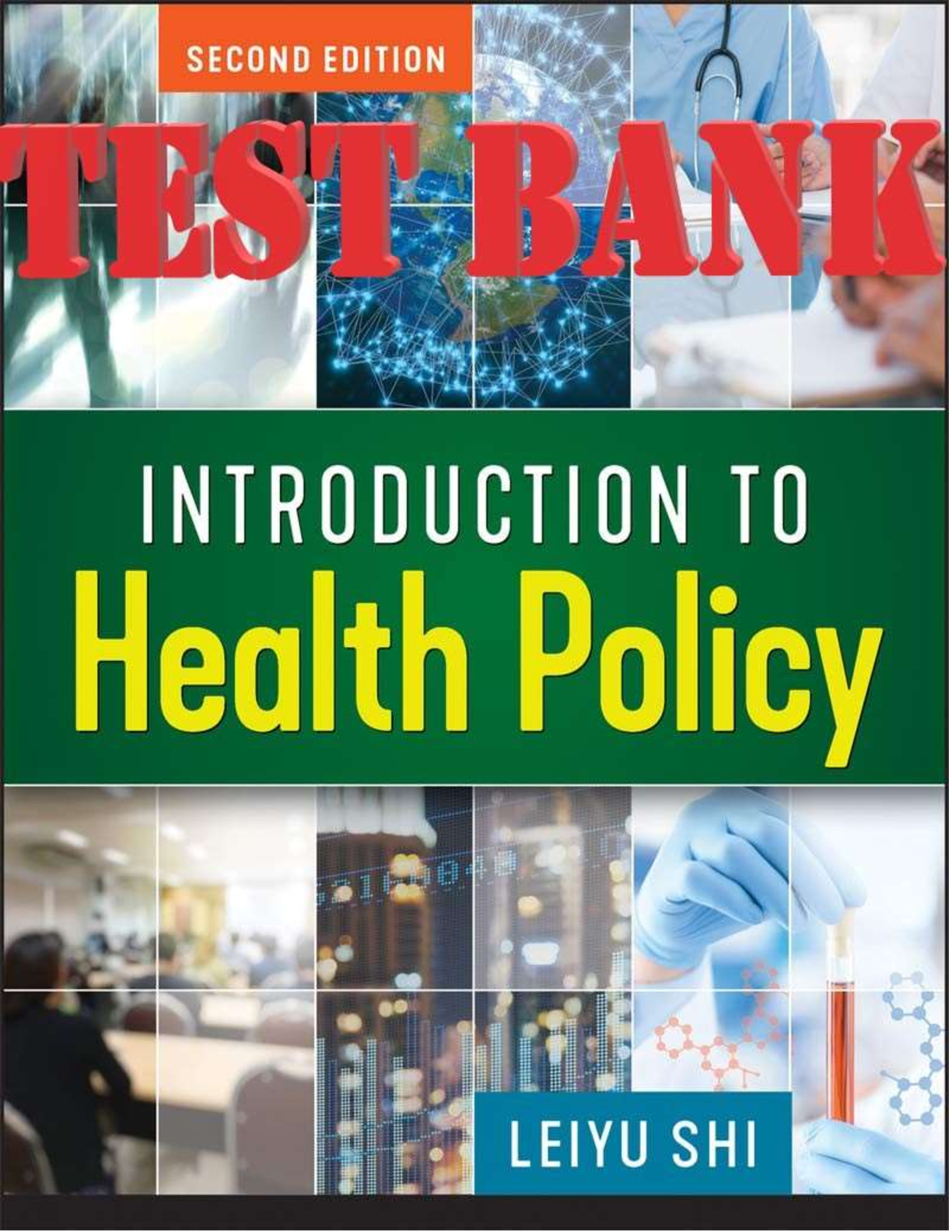*NURSING > TEST BANK > TEST BANK FOR INTRODUCTION TO CRITICAL CARE NURSING 7TH EDITION BY SOLE Chapter 16: Acute Kidney Inj (All)
TEST BANK FOR INTRODUCTION TO CRITICAL CARE NURSING 7TH EDITION BY SOLE Chapter 16: Acute Kidney Injury
Document Content and Description Below
Chapter 16: Acute Kidney Injury Test Bank MULTIPLE CHOICE 1. With sudden cessation of renal function, all body systems are affected by the inability to maintain fluid and electrolyte balance and ... eliminate metabolic waste. In critically ill patients, renal dysfunction: a. is a very rare problem. b. affects nearly two thirds of patients. c. has a low mortality once renal replacement therapy has been initiated. d. has little effect on morbidity, mortality, or quality of life. ANS: B The kidney is the primary regulator of the body’s internal environment. With sudden cessation of renal function, all body systems are affected by the inability to maintain fluid and electrolyte balance and eliminate metabolic waste. Renal dysfunction is a common problem in critically ill patients with nearly two thirds of patients experiencing some degree of renal dysfunction. The most severe cases requiring renal replacement therapy have a reported mortality of 50% to 60%. Acute kidney injury that progresses to chronic renal failure is associated with increased morbidity, mortality and reduced quality of life. DIF: Cognitive Level: Comprehension REF: p. 432 OBJ: Review the anatomy and physiology of the renal system. TOP: Nursing Process Step: Assessment MSC: NCLEX: Physiological Integrity 2. The nurse is caring for a patient who has sustained blunt trauma to the left flank area, and is evaluating the patient’s urinalysis results. The nurse should become concerned when a. creatinine levels in the urine are similar to blood levels of creatinine. b. sodium and chloride are found in the urine. c. urine uric acid levels have the same values as serum levels. d. red blood cells and albumin are found in the urine. ANS: D Normal glomerular filtrate is basically protein free and contains electrolytes, including sodium, chloride, and phosphate, and nitrogenous waste products, such as creatinine, urea, and uric acid, in amounts similar to those in plasma. Red blood cells, albumin, and globulin are too large to pass through the healthy glomerular membrane. Their presence in urine may indicate glomerular damage. DIF: Cognitive Level: Comprehension REF: p. 433 OBJ: Review the anatomy and physiology of the renal system. TOP: Nursing Process Step: Assessment MSC: NCLEX: Physiological Integrity 3. A normal glomerular filtration rate is: a. less than 80 mL/min. b. 80 to 125 mL/min c. 125 to 180 mL/min d. more than 189 mL/min ANS: B At a normal glomerular filtration rate (GFR) of 80 to 125 mL/min, the kidneys produce 180 L/day of filtrate. As the filtrate passes through the various components of the nephron’s tubules, 99% is reabsorbed into the peritubular capillaries or vasa recta. DIF: Cognitive Level: Knowledge REF: p. 434 OBJ: Review the anatomy and physiology of the renal system. TOP: Nursing Process Step: Assessment MSC: NCLEX: Physiological Integrity 4. A normal urine output is considered to be: a. 80 to 125 mL/min. b. 180 L/day. c. 80 mL/min. d. 1 to 2 L/day. ANS: D At a normal glomerular filtration rate (GFR) of 80 to 125 mL/min, the kidneys produce 180 L/day of filtrate. As the filtrate passes through the various components of the nephron’s tubules, 99% is reabsorbed into the peritubular capillaries or vasa recta. Eventually, the remaining filtrate (1% of the original 180 L/day) is excreted as urine, for an average urine output of 1 to 2 L/day. DIF: Cognitive Level: Knowledge REF: p. 434 OBJ: Review the anatomy and physiology of the renal system. TOP: Nursing Process Step: Assessment MSC: NCLEX: Physiological Integrity 5. Renin plays a role in blood pressure regulation by: a. activating the renin-angiotensin-aldosterone cascade. b. suppressing angiotensin production. c. decreasing sodium reabsorption. d. inhibiting aldosterone release. ANS: A Specialized cells in the afferent and efferent arterioles and the distal tubule are collectively known as the juxtaglomerular apparatus. These cells are responsible for the production of a hormone called renin, which plays a role in blood pressure regulation. Renin is released whenever blood flow through the afferent and efferent arterioles decreases. A decrease in the sodium ion concentration of the blood flowing past the specialized cells (e.g., in hypovolemia) also stimulates the release of renin. Renin activates the renin-angiotensin-aldosterone cascade, which ultimately results in angiotensin II production. Angiotensin II causes vasoconstriction and release of aldosterone from the adrenal glands, thereby raising blood pressure and flow and increasing sodium and water reabsorption in the distal tubule and collecting ducts. DIF: Cognitive Level: Knowledge REF: p. 434 OBJ: Review the anatomy and physiology of the renal system. TOP: Nursing Process Step: Assessment MSC: NCLEX: Physiological Integrity [Show More]
Last updated: 1 year ago
Preview 1 out of 24 pages
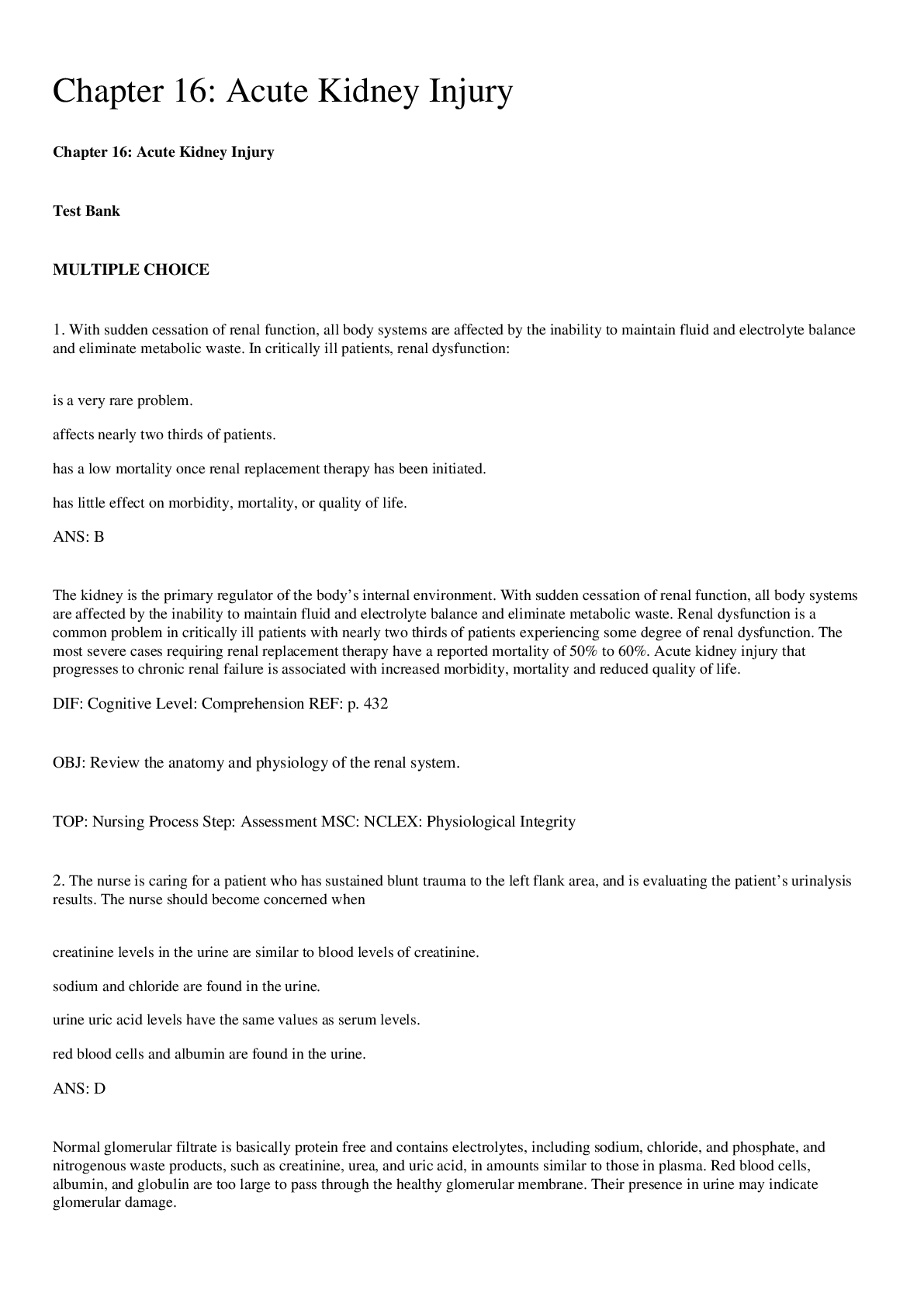
Buy this document to get the full access instantly
Instant Download Access after purchase
Add to cartInstant download
We Accept:

Reviews( 0 )
$4.50
Document information
Connected school, study & course
About the document
Uploaded On
Feb 27, 2021
Number of pages
24
Written in
Additional information
This document has been written for:
Uploaded
Feb 27, 2021
Downloads
1
Views
85



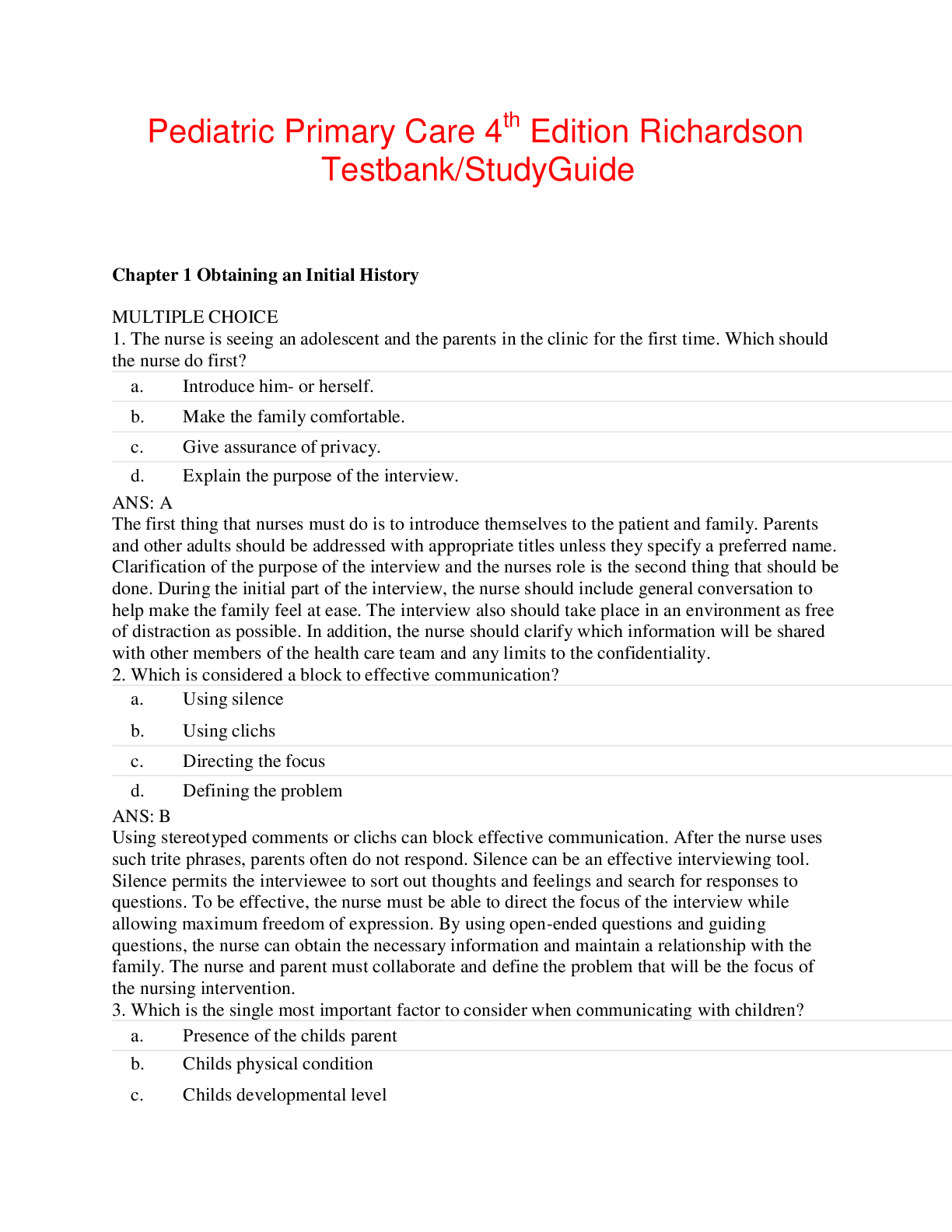

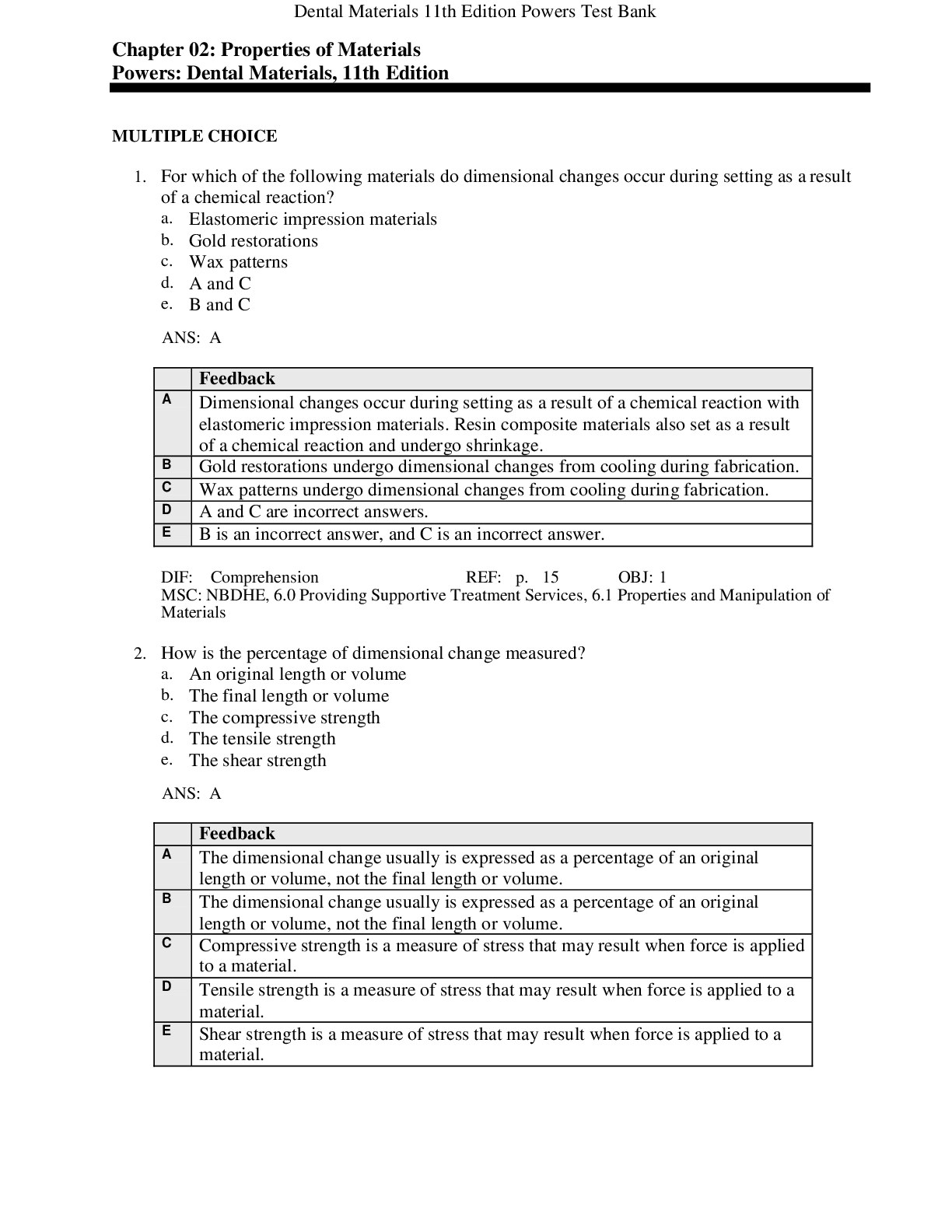
.png)
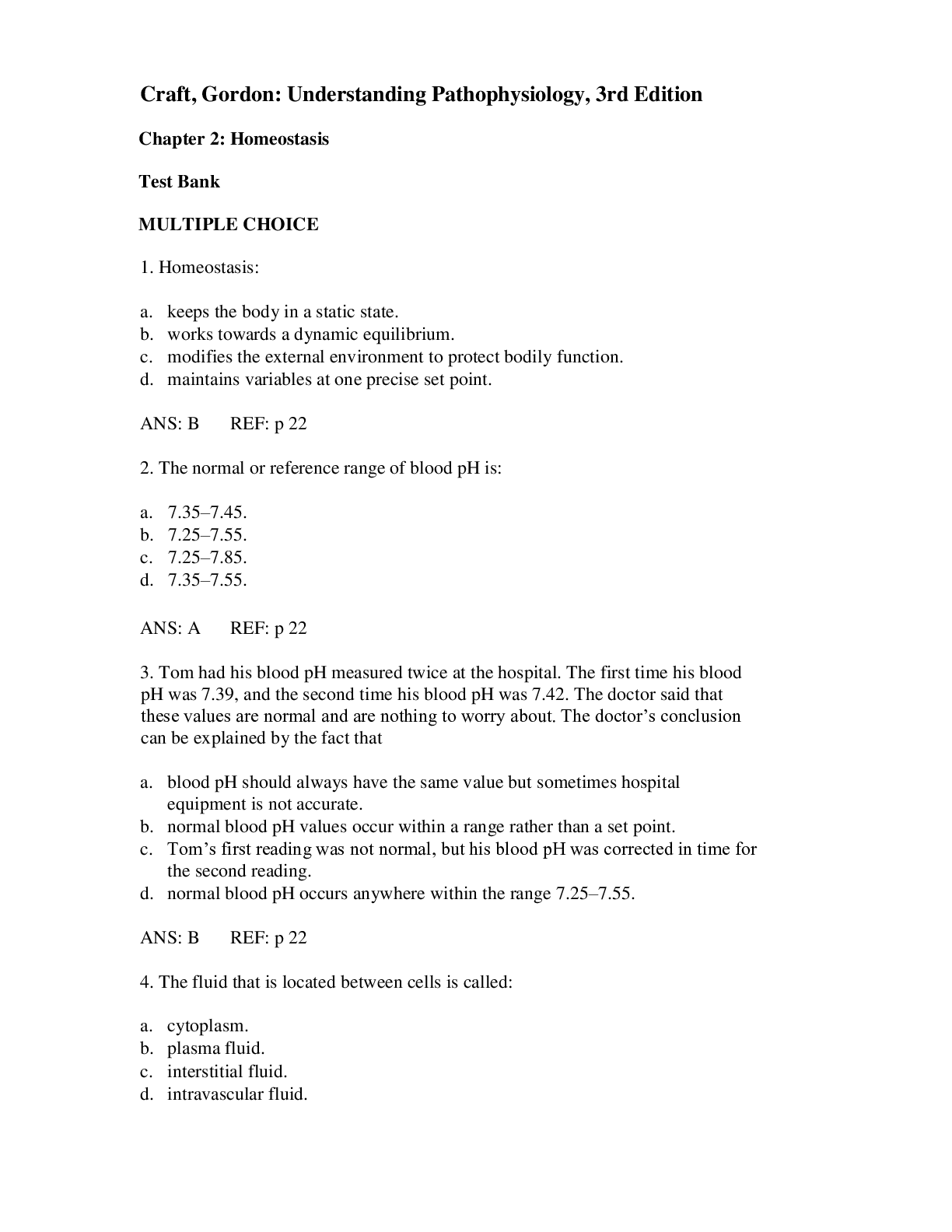



.png)
.png)
